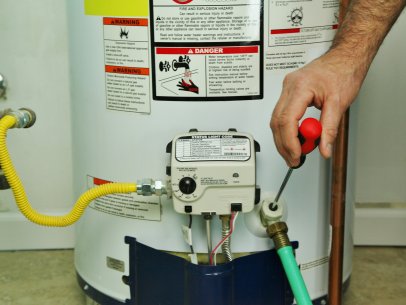Ensuring Longevity of Your Home's Hot Water System: Maintenance AdviceTop Methods to Care for Your Home's Hot Water System Effectively
Ensuring Longevity of Your Home's Hot Water System: Maintenance AdviceTop Methods to Care for Your Home's Hot Water System Effectively
Blog Article
How do you feel in regards to What Kind of Maintenance Do Water Heaters Need??

Warm water is necessary for everyday comfort, whether it's for a refreshing shower or cleaning meals. To ensure your hot water system runs efficiently and lasts longer, normal upkeep is essential. This write-up supplies practical tips and understandings on exactly how to preserve your home's warm water system to avoid disturbances and expensive fixings.
Intro
Maintaining your home's warm water system may seem overwhelming, yet with a few simple actions, you can ensure it runs smoothly for several years to come. This overview covers whatever from recognizing your hot water system to do it yourself maintenance pointers and understanding when to hire expert help.
Value of Maintaining Your Warm Water System
Routine upkeep not only extends the life expectancy of your warm water system however additionally ensures it runs effectively. Ignoring maintenance can result in lowered effectiveness, greater energy costs, and even early failure of the system.
Indications Your Warm Water System Requirements Upkeep
Knowing when your warm water system needs interest can prevent major issues. Look out for indicators such as inconsistent water temperature level, strange sounds from the heating system, or rustic water.
Recognizing Your Hot Water System
Prior to diving right into maintenance jobs, it's helpful to comprehend the standard components of your warm water system. Normally, this consists of the hot water heater itself, pipes, anode rods, and temperature level controls.
Monthly Maintenance Tasks
Normal monthly checks can assist capture small issues before they rise.
Flushing the Water Heater
Purging your hot water heater gets rid of debris buildup, improving effectiveness and lengthening its life.
Monitoring and Changing Anode Rods
Anode rods avoid deterioration inside the tank. Examining and replacing them when worn is vital.
Inspecting and Adjusting Temperature Setups
Readjusting the temperature setups guarantees ideal efficiency and safety and security.
DIY Tips for Maintenance
You can carry out a number of upkeep jobs on your own to maintain your warm water system in top condition.
Checking for Leaks
Frequently examine pipelines and connections for leakages, as these can bring about water damages and greater costs.
Testing Pressure Relief Valves
Examining the stress safety valve guarantees it works properly and stops extreme pressure accumulation.
Insulating Pipelines
Shielding warm water pipes minimizes heat loss and can save energy.
When to Call a Specialist
While do it yourself maintenance is useful, some issues require professional knowledge.
Complex Concerns Needing Expert Aid
Examples consist of significant leaks, electrical problems, or if your water heater is consistently underperforming.
Regular Expert Maintenance Advantages
Specialist upkeep can include comprehensive inspections, tune-ups, and making certain compliance with safety requirements.
Conclusion
Normal maintenance of your home's hot water system is essential for effectiveness, durability, and cost financial savings. By adhering to these suggestions and recognizing when to look for professional help, you can make certain a trustworthy supply of warm water without unexpected disturbances.
How to Maintain an Instant Hot Water Heater
Before tinkering with your hot water heater, make sure that it’s not powered on. You also have to turn off the main circuit breaker and shut off the main gas line to prevent accidents. Also turn off the water valves connected to your unit to prevent water from flowing into and out of the appliance. 2. When you’re done, you have to detach the purge valves’ caps. These look like the letter “T” and are situated on either side of the water valves. Doing so will release any pressure that has accumulated inside the valves while at the same time avoid hot water from shooting out and burning your skin. 3. When the purge valves’ caps are removed, you have to connect your hosing lines to the valves. Your unit should have come with three hoses but if it didn’t, you can purchase these things from any hardware or home repair shops. You can also get them from retail stores that sell water heating systems. Read the user’s manual and follow it to complete this task properly. When the hosing lines are connected, open the purge port’s valves. 4. You should never use harsh chemical cleaners or solutions when cleaning your unit. Make use of white vinegar instead. It should be undiluted and you’ll probably use about 2 gallons. 5. Now flush your water heater. This task should probably take about 40 minutes. We can’t give you specific directions for this because the procedure is carried out depending on the type, model and brand of your heater. With that being said, refer to the user’s manual. 6. When you’re done draining the unit, you have to turn off the purge port valves again. Remove the hosing lines that you earlier installed on each of the water valves. Put the valve caps (purge port) back in their respective places and be very careful so as not to damage the rubber discs that are found inside these caps. 7. Now that everything’s back in place, check your user’s manual again to find out how to reactivate your water heating system. 8. Once it is working, turn one of your hot water faucets on just to let air pass through the heater’s water supply pipes. Leave the tap on until water flows smoothly out of it. https://www.orrplumbing.com/blog/2014/september/how-to-maintain-an-instant-hot-water-heater/

We hope you liked our topic about Tips on Maintaining a Water Heater. Thanks a lot for finding the time to read through our content. Remember to take a moment to distribute this blog entry if you appreciated it. Thanks a lot for your time. Please come by our website back soon.
Schedule Today! Report this page